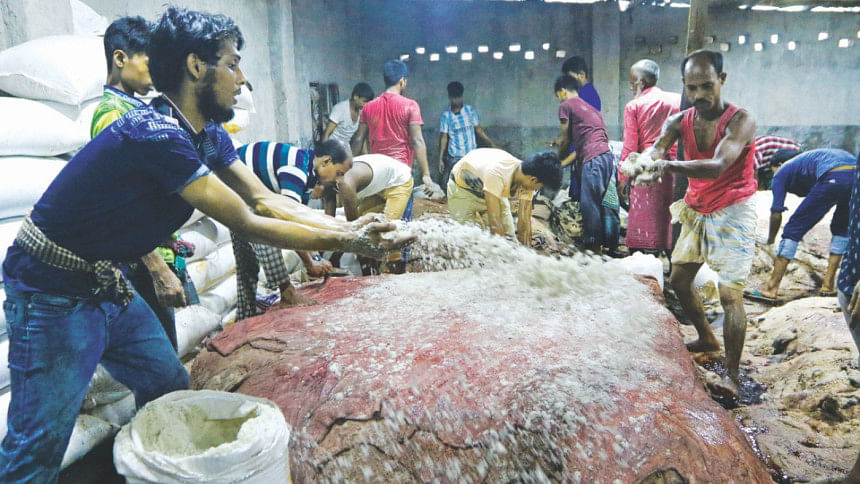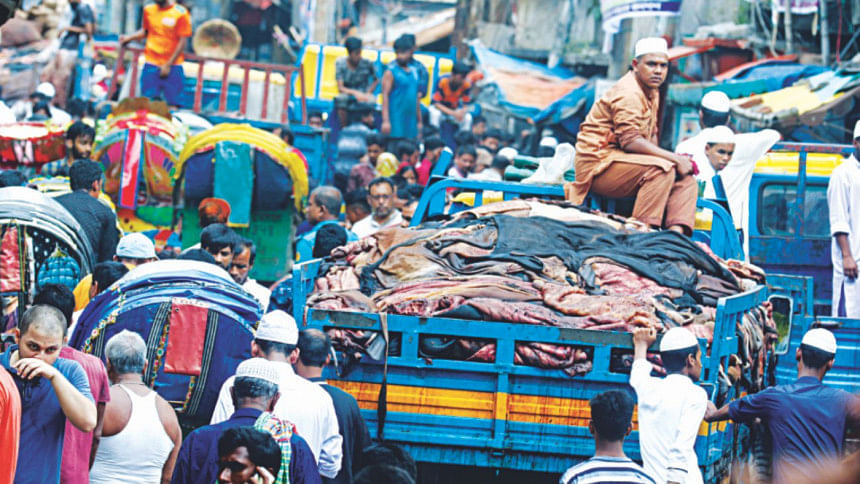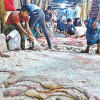Slump in Rawhide Price: Heavy blow to seasonal, small traders

Prices of rawhide of sacrificial animals crashed to a 10-year low during this Eid, dealing a heavy blow to small and seasonal traders.
Stakeholders attributed the poor prices to acute fund crisis faced by rawhide merchants and traders, as tanners didn't pay them arrears before the Eid.
They also mentioned non-operation of a number of tanneries at the newly established Savar Tannery Industrial Estate (STIE) as one of the major reasons.
During this Eid, rawhide of a cow was sold for Tk 100-500, the lowest in the last 10 years. The price was Tk 600-800 last year, said a number of traders.
Tanners have not paid arrears to rawhide merchants and small traders for the last four years on the pretext that many tanneries remained non-operational after being shifted to Savar from the capital's Hazaribagh, they pointed out.
On the other hand, tanners claimed that they have been suffering from fund crisis as they couldn't get loans from banks and many of the factories could not run operation at the new industrial site in Savar.
This year, rawhide was sold at prices much lower than the government-set prices.
A week before the Eid, the government reduced rawhide prices by Tk 5 a square foot from Tk 50-55 last year, citing fall in prices of leather goods on the international market and non-operation of a number of tanneries in Savar.
The price of salt-applied rawhide of cows and buffalos was fixed at Tk 45-50 per square foot in the capital and Tk 35-40 outside. For rawhide of goats, the price was Tk 13-20 per square foot across the country.
Md Shamsuddin, a trader in the capital's Posta, the country's biggest rawhide market, said, “High price of salt and non-payment by tanners are the main problems. I could make a profit of only Tk 50 by selling a piece of rawhide.”
There were around 200 traders in Posta but now only half of them run business in the area, he said.
Delwar Hossain, president of rawhide traders' main platform Bangladesh Hide & Skin Merchants' Association, said tanners owe rawhide merchants across the country around Tk 350 crore accumulated over the last four years.
The tanners were supposed to pay at least 30 percent of the arrears to merchants and traders before the Eid, but most of them didn't make any payments, he said.
The small traders were left with no option but to buy rawhide with whatever money they could manage, and they are now trying to sell those to merchants, Delwar said.
“We expect to collect one crore pieces of rawhide this time. Of those, 70 lakh are of cows and buffaloes, and 30 lakh are of goats.”
Bangladesh Tanners Association Chairman Md Shaheen Ahamed claimed that only 42 companies could get loans from banks before Eid, and of those, only a few could pay 20 percent of the arrears to merchants.
“Many of the tanneries are yet to start operation at the new site in Savar. As a result, there is no production and no business. This is why they couldn't pay the arrears to the merchants,” claimed Shaheen.

He also mentioned that 40 percent of the previous stock of tanned leather remains unsold, which is another major reason for the tanners' inability to pay up.
Shaheen, however, said the tanners will start buying rawhide soon.
STIE Deputy Manager Moin Uddin Ahamed said only a few rawhide-laden trucks arrived in the estate after the Eid, as the tanners were yet to start buying rawhide in full swing.
So far, 114 of the 155 tanneries could start full or partial production at the STIE, he said.
Last year, only 25-30 tanneries were in operation there.
Leather and leather goods are Bangladesh's second largest export items after ready-made garments.
In the last fiscal year, the country exported leather and leather goods worth $1.08 billion, down 12.03 percent year-on-year. The earning was 21.34 percent below the annual target of $1.38 billion.

 For all latest news, follow The Daily Star's Google News channel.
For all latest news, follow The Daily Star's Google News channel. 




Comments